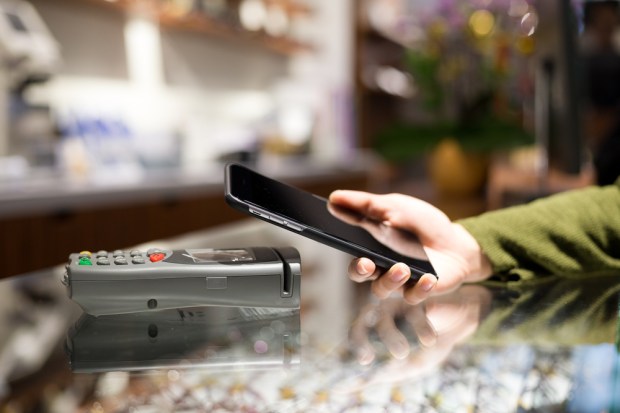PYMNTS Mobile User Data Hints At Differentiation

It’s amazing what you can find when you dig into the data. We have tens of thousands of data points from questions we’ve asked 4,000 consumers every quarter over the last 18 months, in conjunction with InfoScout, about the adoption of mobile payments.
The last two quarters have helped us make some sharp comparisons between Android mobile payments users and Apple Pay users.
Such as who likes and uses the Starbucks app more, and who has more of a tendency to register a credit or debit card to their mobile payment app or who, when they don’t use a mobile payments app, is more likely to use a debit or a credit card at the point of sale.
Keep in mind that the retailers we look at are those that are capable of enabling an NFC payment – so they include drug/grocery/QSR and some retail.
Let’s dig in.
Will The Real Starbucks Users Please Use Your Mobile App?
Perhaps. The data from the poll show that 23.5 percent of Starbucks mobile app users download the iOS app, whereas 13.4 percent download the Android app. Starbucks app users tend to be Apple mobile device users, PayPal users are almost equally divided, while Walmart Pay users are decidedly Android users.
Credit Or Debit In-App?
The Android and Samsung Pay (which we’ve lumped together as Android) users we surveyed were less likely to register credit cards than were the Apple Pay users. Part of this is that Apple Pay users can’t register their bank accounts. In addition, Apple Pay users said that rewards points obtained using a method other than mobile payments, presumably from a credit card, was their reason for not choosing a mobile payments transaction.
Who Swiped (And Really Likes Mobile)?
Now this was in June, but when both Android/Samsung Pay users and Apple Pay users aren’t using their mobile payments apps – and we know that happens to be 19 out of every 20 times they are in a store that had NFC – and, therefore, EMV terminals, they were using a plastic card. And the majority of the time 70 percent of both Android/Samsung Pay users and 57 percent of Apple Pay users were swiping and not dipping, which suggests that the store they were in didn’t have EMV turned on at that time.
Of course, the reason that they were using those cards is because they knew how to use them, and they knew they were accepted there. Mobile payments still have a long road to travel.
What is perhaps most interesting is that Android Pay/Samsung Pay users felt less befuddled by the new mobile payments technology – only 17 percent of users said that not understanding the technology held them back from trying it. Apple Pay users felt more uncomfortable – with a quarter of users saying that they didn’t try because they weren’t comfortable taking it for a spin.
